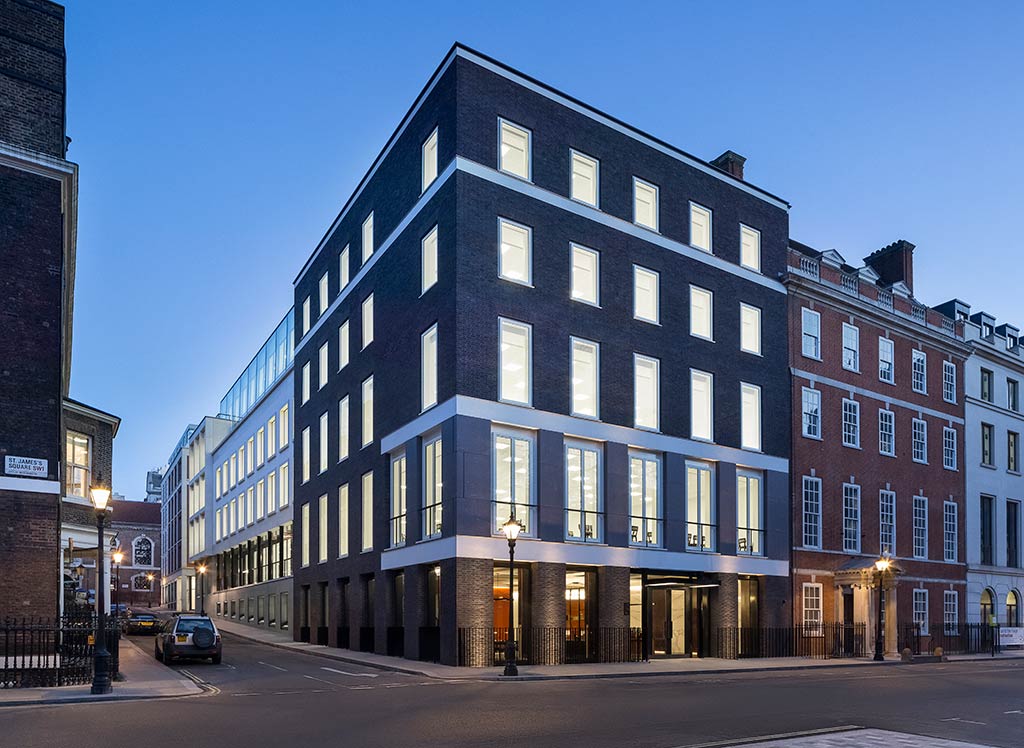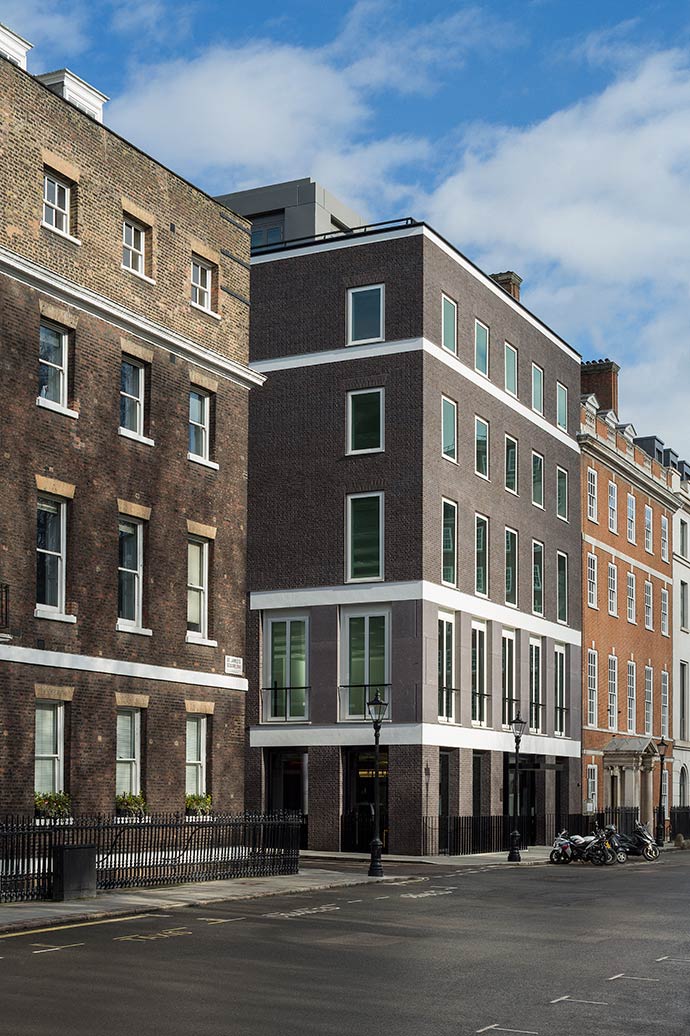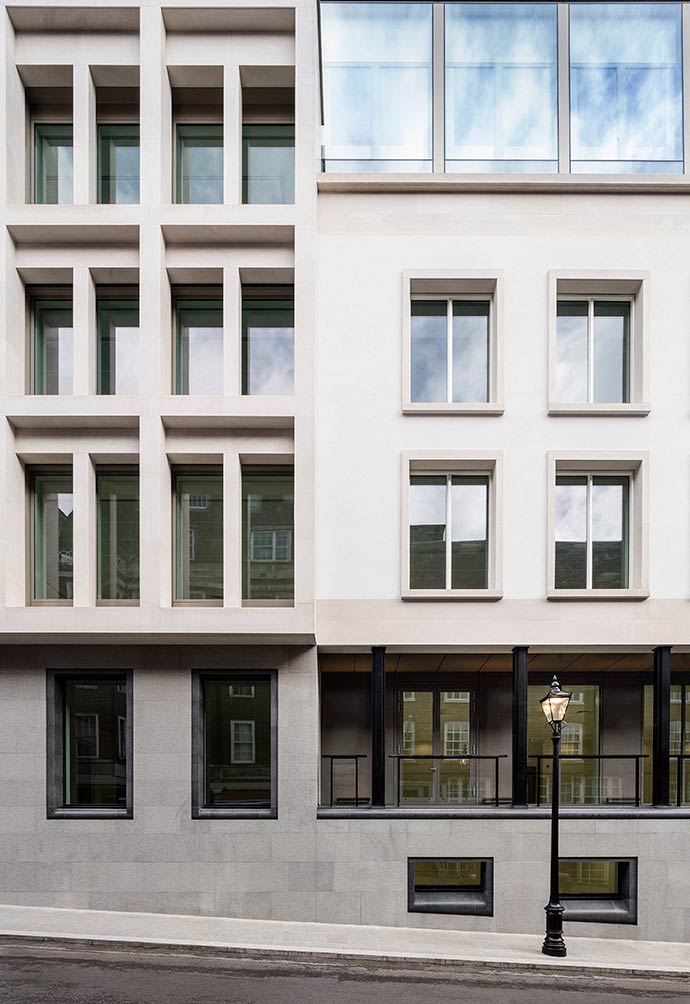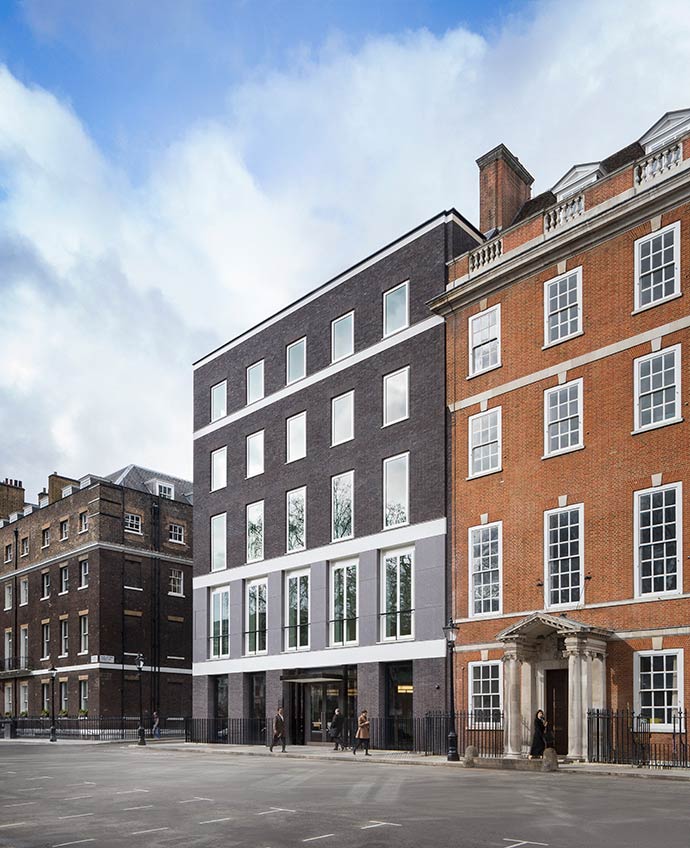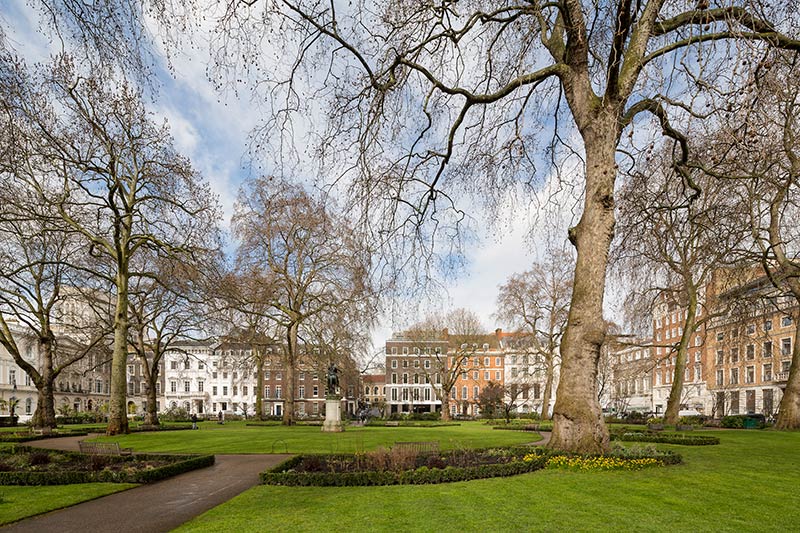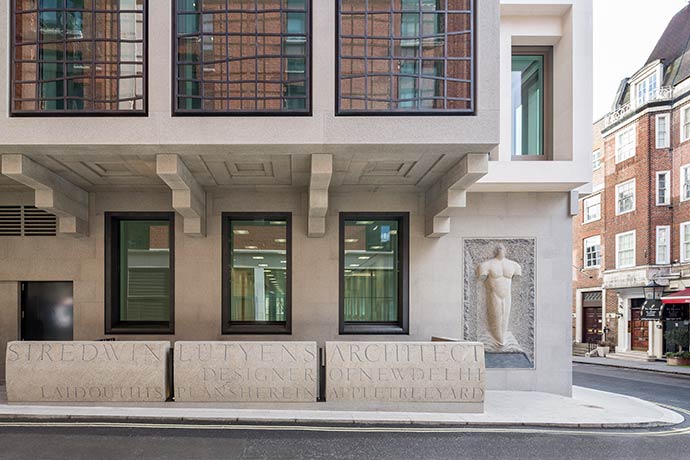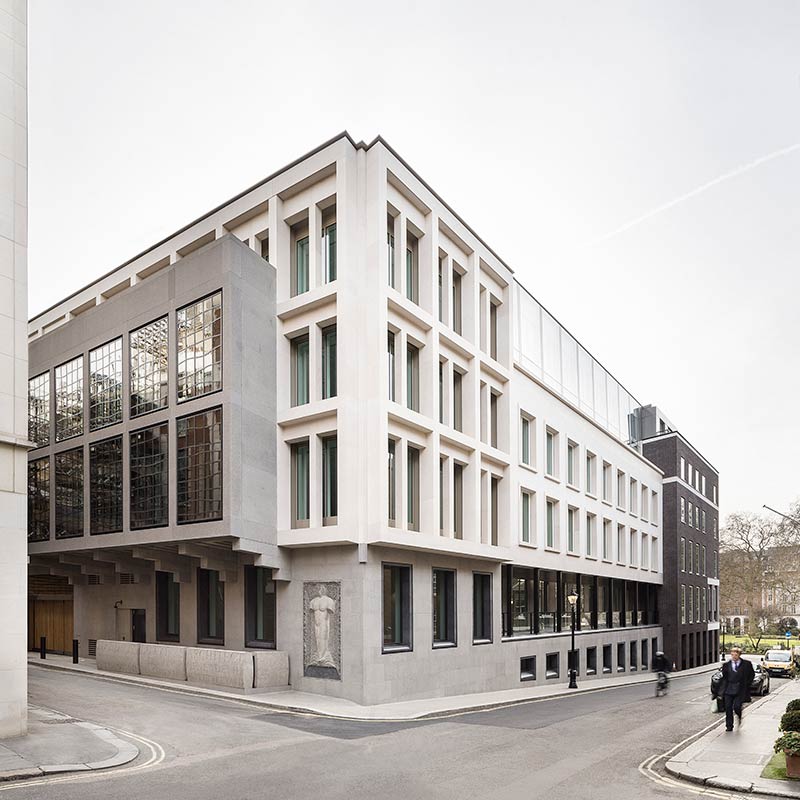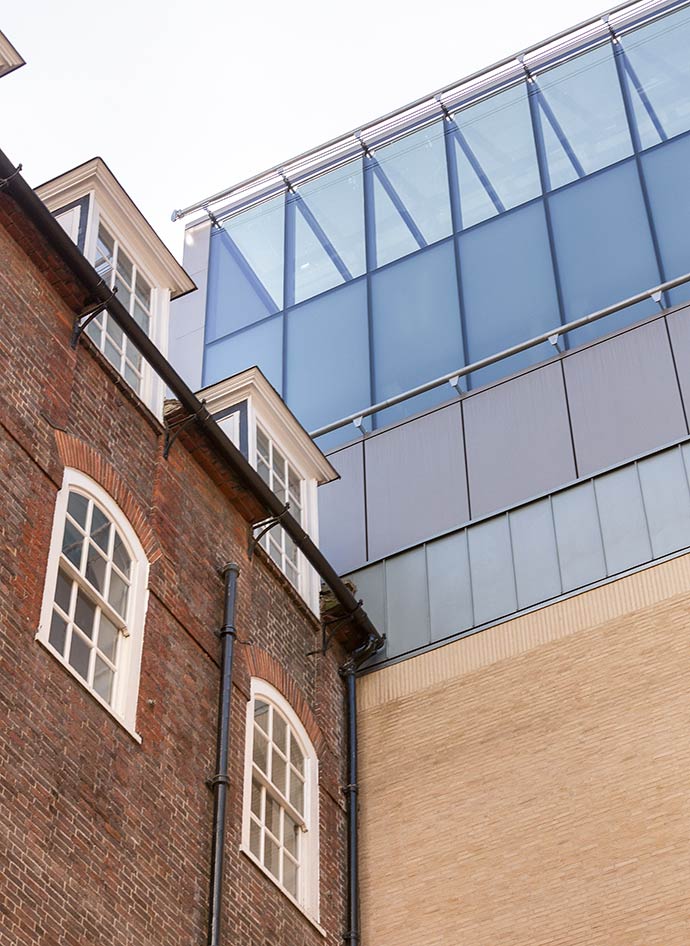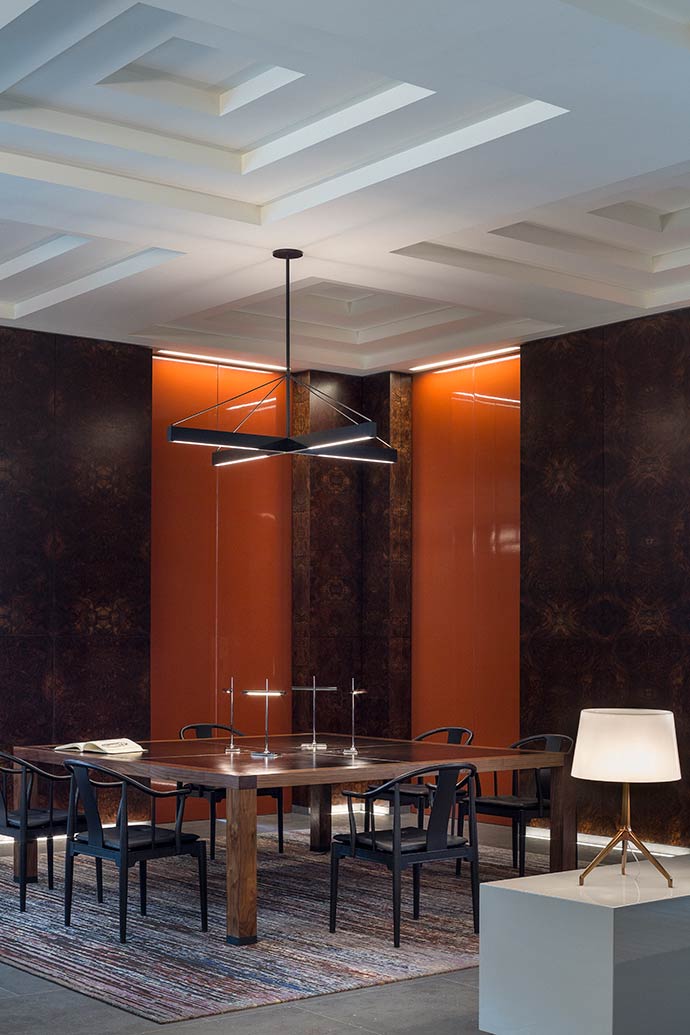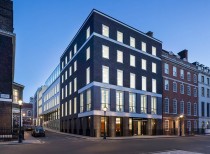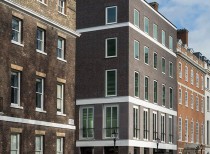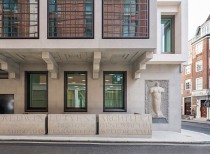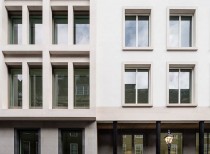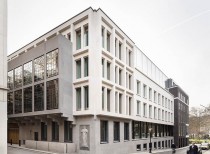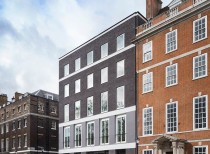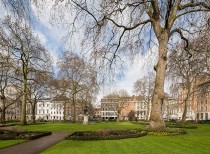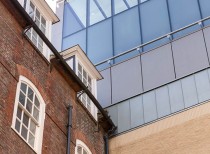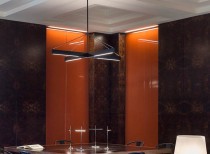Project Details:
Location: London, UK
Type: Offices
Architects: Eric Parry Architects
8 St James’s Square, the new office building designed by Eric Parry Architects for Green Property, is now completed, delivering 65,500 sq ft. office space over eight floors in the heart of Westminster.
The site is located within St James’s Conservation Area and occupies a section of the north-east side of the square adjacent to No.7, designed by the renowned English architect Sir Edwin Lutyens.
Eric Parry Architects’ multi-layered building responds to the spirit of the place and the surrounding buildings while providing one of London’s finest squares with a contemporary building that mediates between square, street and the rear yard.
8 St James’s Square allows higher floors at first and ground level, the latter providing grandeur to the entrance and allowing windows above the rising pavement of Duke of York Street.
The upper floors have a uniform ceiling height and benefit from external terraces, where the building sets back.
The three different façade treatments enhance the character of each section whilst still creating coherence within the office floors. They present four principal arrangements:
The façade on St James’s Square
A five storey, self-supporting brickwork façade has replaced the existing seven storey elevation overlooking St James’s Square. Dark in tone to complement the nearby Georgian buildings while contrasting with the neighbouring Lutyens façade, the elevation onto the square is dominated by a linear and symmetrical window arrangement.
The sixth floor sets back from the parapet and features full height glazed doors and metal cladding panels.
Two metal columns either side of the glazed doors provide the building’s main entrance.
Duke of York Street – Central Section
The elevation on Duke of York Street is influenced by the slope of the street, with difference in frontage widths and overall heights adding character to this façade.
The deep windows of the ground floor, which continues below pavement level at the north end of the site, vary in size in response to the change in street level and are framed by pronounced, curved granite sills.
The central section is set back and detailed with different materials. The solid wall is broken between the terrace and the ground floor. A granite wall rises to the first floor, where it creates an inset balcony allowing daylight to the ground floor offices below. The rendered wall surface of the second and third floor features limestone details to the string courses, window surrounds and cills, and parapet.
The fourth and fifth floor wall is inclined, with a triple glaze to reflect the sky. These floors are set back, providing a terrace on the fourth floor. The sixth floor is set back further, with narrow cladding sections and profiled roof coping.
Duke of York Street – Corner
On the corner between Duke of York Street and Apple Tree Yard, the stone elevation features a granite base and a three-storey Portuguese limestone pavilion projecting forward on both sides of the building.
The fifth floor above this corner benefits from a terrace with a setback painted metal balustrade.
Apple Tree Yard
The Apple Tree Yard façade features a projecting bay that rises from the granite base including the massive supporting corbels on the second and third floors. The bay presents windows with gently distorted stainless bronze panes, a reference to the windows of the adjacent Church of St James’s, in Piccadilly.
This floating pavilion celebrates fine craftsmanship in stone and glass, while the cantilever allows a new lightwell at pavement level, letting daylight and air into the ground and lower ground office floors.
Above, the fifth and sixth floors are set back in line with the other elevations.
Stephen Cox’s artwork is featured on the lower wall, proximate to the corner of the Apple Tree Yard façade with Duke of York Street. The basalt sculpture, an evocative relief hewn from an 18 ton block of granite, emerges out of the elevation.
It is accompanied by a three stone panel balustrade, inscribed with a tribute to the English architect and designer of New Delhi, Sir Edwin Lutyens, who laid out his plan for the Indian capital from his studio on Apple Tree Yard (1913 – 28).
Both the sculpture and the balustrade bring the opportunity to improve the public realm while referencing the history of the site and recalling the carving traditions of India.
Interiors
Eric Parry Architects has fashioned a series of dramatic and elegant interior spaces, drawing inspiration from the history of the legendary Gentlemen’s Clubs that still surround St James’s Square, and maintain the exclusive character of the area.
The internal atmosphere features a sophisticated material palette and a unique furniture selection including bespoke furnishings designed by Eric Parry Architects.
A glass display cabinet contains a selection of fine porcelain artifacts by artist Carina Ciscato. The installation is an echo of the fact that this corner of the Square housed the London showroom of celebrated English pottery manufacturer Josiah Wedgwood, who moved to 8 St James’s Square in 1774.
Through the main door, the impressive reception performs both as a waiting area and as a location to host business and private gatherings.
Different levels of privacy are regulated by two distinctive types of window panels acting like screens to control the visual access to the reception area from the street, while a flexible furniture arrangement allows the spaces to be used in a variety of ways.
The dark warmth of American walnut complements the softness of leather, juxtaposed with the rawness of limestone floor. The highly polished red lacquered window panels challenge the subtle matte effect of the maple wood frames and the refined reed screens in front of them.
From the reception area, a generous passage leads to the lobby and access to the main staircase and the bank of four lifts, set with beautifully veined Carrara marble slabs.
Eric Parry, Principal at Eric Parry Architects said:
We are extremely pleased to announce the completion of 8 St James’s Square. The project has required a thorough approach, taking into consideration the challenges imposed by the site as well as the richness in the heritage of the area. These informed our design for the architecture and the interiors, as well as the choice of Stephen Cox to carry out the sculptural commission in commemoration of Sir Lutyens and his connection with this special part of Westminster.

